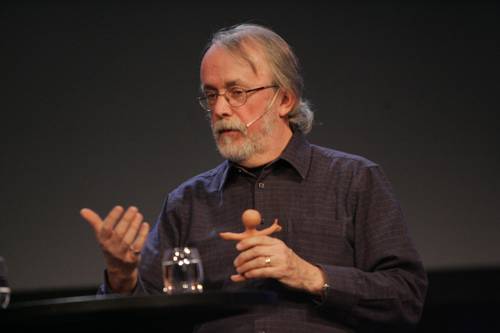
FAQ About The Role of Traditional Storytelling in Modern Animation

What is traditional storytelling in the context of animation?
Traditional storytelling refers to the methods and techniques used by cultures worldwide to pass down narratives, morals, and knowledge across generations. In animation, this encompasses storytelling elements such as myth, folklore, and legend that influence the themes, characters, and narrative structures of animated works.

How does traditional storytelling influence modern animation?
Traditional storytelling influences modern animation by providing rich narrative frameworks and characters that animators adapt to new media. These timeless stories often offer universal themes of heroism, morality, and adventure, which continue to resonate with contemporary audiences, enriching animated works with depth and cultural heritage.

Can you give examples of animations inspired by traditional storytelling?
Yes, many animations draw from traditional storytelling. Examples include Disney's "Moana," which is inspired by Polynesian myths, and Studio Ghibli's "Princess Mononoke," which incorporates elements of Japanese folklore. These stories are adapted with creative twists to suit modern audiences while respecting their cultural roots.

Why is cultural authenticity important in animations based on traditional storytelling?
Cultural authenticity ensures that the stories portrayed are respectful and true to the source material. This is crucial in avoiding cultural appropriation and misrepresentation, fostering a greater appreciation for diverse cultures, traditions, and their narratives in a global audience.

What challenges do animators face when using traditional storytelling?
Animators often face the challenge of balancing respect for the original culture with creating engaging content for a modern audience. Other challenges include potential misinterpretations of cultural elements, incorporating complex themes in a simple format, and ensuring cultural sensitivity and inclusivity throughout the production process.

How do traditional storytelling techniques enhance the artistic style of modern animations?
Traditional storytelling techniques often enhance the artistic style by introducing unique visual elements, motifs, and narrative structures. These elements can influence character design, scenery, and the general aesthetic of the animation, sometimes incorporating traditional art forms or patterns reflective of the culture in question.

Is there an increasing trend in using traditional storytelling in modern animations?
Yes, there is a growing trend as audiences seek diverse and culturally rich narratives. Studios recognize the value in these timeless stories, appealing to both local audiences familiar with the narratives and global audiences interested in diverse cultural expressions.

How do animators ensure they accurately reflect the traditional stories they adapt?
Animators often collaborate with cultural advisors, historians, or experts in the field of study to ensure authenticity. These collaborations help in maintaining cultural accuracy, providing insight into traditional customs, language, and societal norms that should be respected and accurately reflected in the adaptation.

What is the impact of globalization on traditional storytelling in animation?
Globalization allows for the cross-cultural exchange of ideas and narratives, leading to a rich tapestry of stories in animation. However, it also poses the risk of homogenizing storytelling, where distinct cultural narratives might be overshadowed by dominant global trends. Animators must balance accessing global markets with maintaining cultural distinctiveness.

How do cultural festivals and events influence traditional storytelling in animation?
Cultural festivals and events offer animators a wealth of material, showcasing traditional dances, music, costumes, and folklore. These elements can be integrated into animations to capture the essence of the culture portrayed, offering authenticity and vibrancy to the narratives.

What role do oral traditions play in creating modern animated stories?
Oral traditions significantly influence modern animations by providing narrative frameworks and storytelling techniques. They offer a dynamic and flexible way of storytelling that can adapt themes such as morality, mythological tales, and historical accounts, thereby enriching the narrative depth of animated tales.

How do animators balance modern sensibilities with traditional stories in animation?
Animators often balance modern sensibilities with traditional stories by updating themes to resonate with contemporary audiences while preserving core traditional values. This includes adapting narrative pacing, character development, and thematic elements to align with current societal norms and interests.

How does technology impact the adaptation of traditional stories in modern animation?
Technology facilitates the adaptation of traditional stories through advanced animation techniques that can vividly bring ancient tales to life. From CGI to virtual reality, these technologies offer new ways to visualize stories, making them more accessible and engaging for today's audiences.

Why do audiences gravitate towards animations rooted in traditional storytelling?
Audiences are attracted to traditional storytelling because it usually presents universal themes and timeless tales that transcend cultural boundaries. These stories often evoke nostalgia, curiosity about different cultures, and an appreciation for historical narratives, contributing to their ongoing appeal.

What is the significance of folklore in shaping animated narratives?
Folklore plays a crucial role by providing time-tested narratives that explore fundamental human experiences and cultural values. These stories offer a wealth of characters, plots, and settings that continue to inspire creators to produce animations rich in cultural depth and meaning.

How can modern animations preserve traditional narratives for future generations?
Modern animations preserve traditional narratives by authentically representing stories and embedding them in media popular with younger generations. This approach not only maintains the cultural integrity of the tales but also ensures that the stories reach and resonate with a new audience, keeping them alive for future generations.

In what ways can animators adapt traditional stories to suit contemporary issues?
Animators can adapt traditional stories by reinterpreting themes and characters to address current societal issues such as diversity, gender equality, and environmentalism. These adaptations allow stories to remain relevant and meaningful while preserving their cultural essence.

How does traditional storytelling bring educational value to animations?
Traditional storytelling adds educational value by exposing audiences to different cultural histories, moral lessons, and philosophical ideas. Animations can introduce viewers to historical contexts, societal norms, and cultural practices in an entertaining yet insightful manner.

What are some common misconceptions about traditional storytelling in animation?
A common misconception is that traditional storytelling is outdated or not applicable in modern contexts. However, these narratives often hold timeless truths and themes that are highly relevant today. Additionally, some people might assume these stories should remain static, when in fact they have always adapted and evolved with changing societies.

How do different cultures influence storytelling techniques in animation?
Different cultures contribute a variety of storytelling techniques, such as non-linear narratives, use of symbolism, and cultural archetypes. These influences result in a diverse array of animated works that reflect global storytelling traditions, providing audiences with varied artistic experiences and perspectives.
